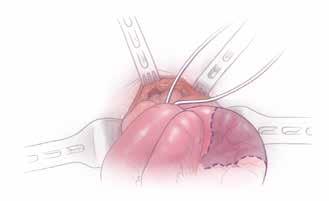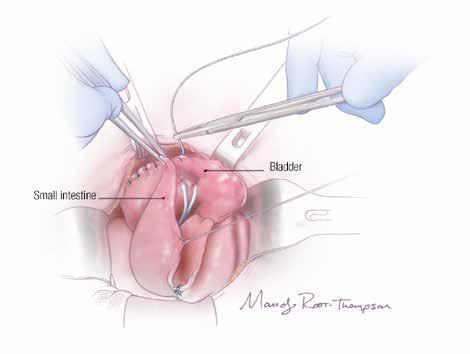
1 minute read
In Sight: A New Kind of Rectal Diversion in Classic Bladder Exstrophy
In Sight
A New Kind of Rectal Diversion in Classic Bladder Exstrophy
Advertisement
When children with classic bladder exstrophy approach school age, they may undergo bladder augmentation and urine diversion procedures that allow them to remain “dry.” Most children ultimately will have a channel from the bladder through the abdomen and void urine with clean intermittent catherization.
An approach developed at Nationwide Children’s Hospital diverts urine to the rectum instead, allowing children to void urine without catheterization. While not appropriate for all children with classic bladder exstrophy, it may improve quality of life for some.
1.
1. The anatomy before bladder augmentation and diversion. In a procedure some months after birth, the child’s previously protruding bladder was enclosed inside the body. The child’s bladder neck does not function properly, however, and urine leaks continually. Incisions are made to open the bladder for augmentation, the ureters are moved superior to their previous locations and the bladder neck is transected. Tissue (with mesentery attached) is removed from the small intestine and detubularized in preparation for augmenting the bladder.
2.
3. 2. 3.


4. The detubularized small intestine tissue is reconfigured to disrupt the normal peristalsis of the bowel. One end of the reconfigured tissue is shaped into a channel that can be attached to the rectum. The resulting patch is sutured to the bladder. Post-surgical anatomy. The augmented bladder is now attached to the rectum, and urine can be voided that way without catheterization.
5.
4. 5.









